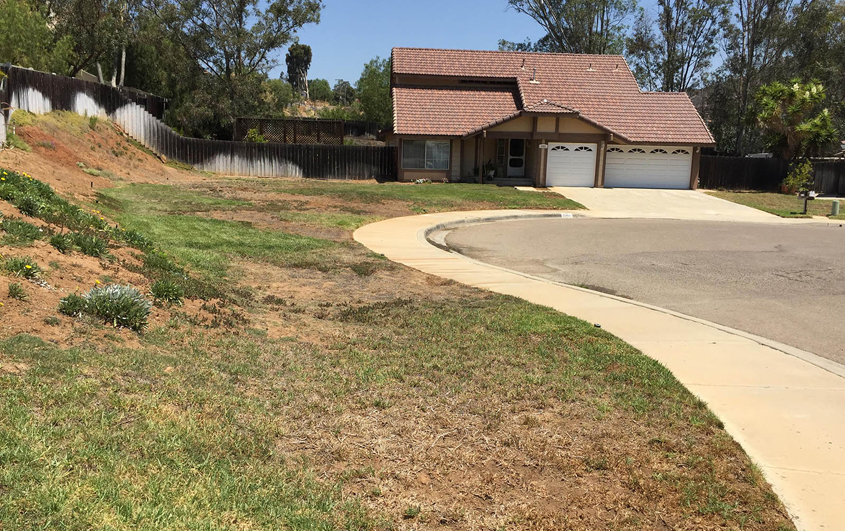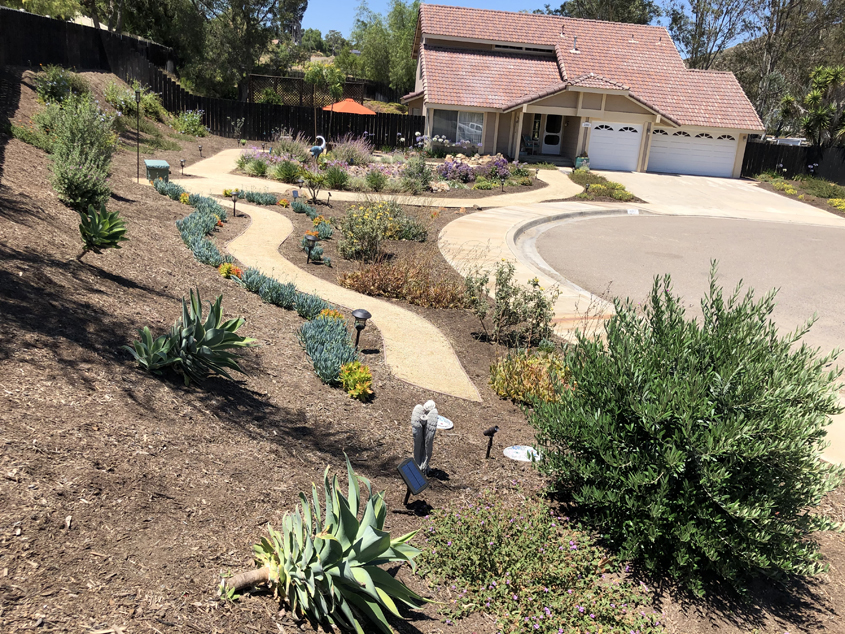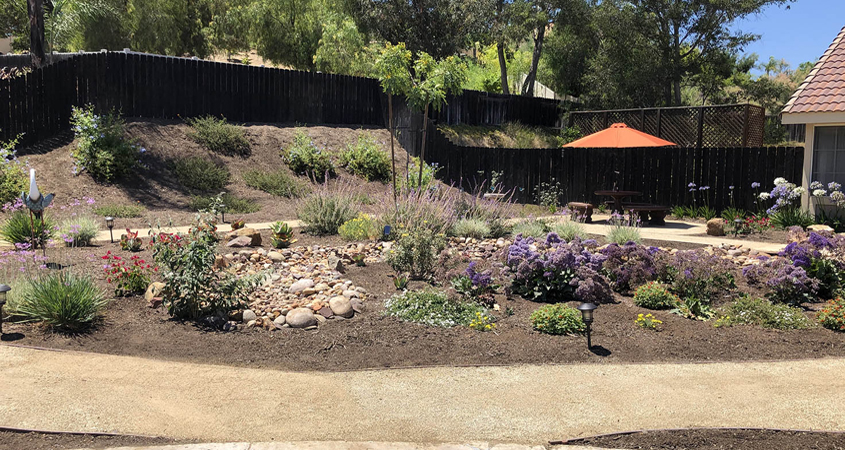Tim and Brianna Montgomery of La Mesa transformed a thirsty lawn to a welcoming, water-efficient English inspired cottage landscaping, winning the Helix Water District 2020 WaterSmart Landscape Contest. The contest is an annual competition recognizing outstanding water-wise residential landscapes based on overall attractiveness, design, efficient irrigation, and appropriate plant selection and maintenance.

The Montgomery home prior to its award-winning landscape makeover. Photo: Helix Water District
Compared to the previous lawn, the Montgomerys’ blooming and colorful English inspired landscape uses much less water than a lawn of similar size. The thriving landscape creates privacy from the road, and compliments the couple’s cottage style home. Over the two-month billing period ending in May 2020, this home used 40% less water than the average Helix Water District customer.
Privacy and low-maintenance style took priority
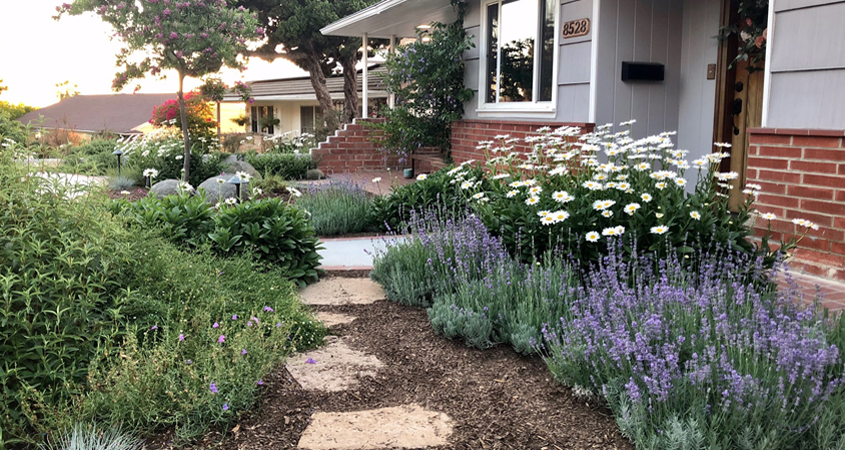
The Montgomerys’ new design incorporates a variety of blooming flowers and herbs. Photo: Helix Water District
They purchased their home in 2014. The couple were not happy with the existing lawn’s water consumption, or the lack of privacy it offered. The front window faces two streets. They made unsuccessful attempts on their own to reduce the lawn’s water use. In addition, the front yard sloped towards the house, causing moisture to form in the home’s basement during rainy weather.
The couple toured numerous gardens in East County with the California Native Plant Society’s native garden tours to collect design ideas. They hired a landscape designer in fall 2018, who worked to create a hardscape layout, irrigation design, and planting plan featuring low-maintenance plants, while still matching the charm and character of their 1950s cottage style home.

Tim and Brianna Montgomery worked with a landscape designer who helped create a hardscape layout, irrigation design, and planting plan featuring a green color palette. Photo: Helix Water District
“Our landscape designer gave us the design to meet our needs and created a plan so that we could do most of the work ourselves,” said Brianna Montgomery. “We only had to hire a contractor to do hardscape work and install the new water-efficient irrigation system. We did all of the other work ourselves, including grading the front, amending our soil with fresh compost, purchasing and installing the new plants, and adding mulch according to the design.”
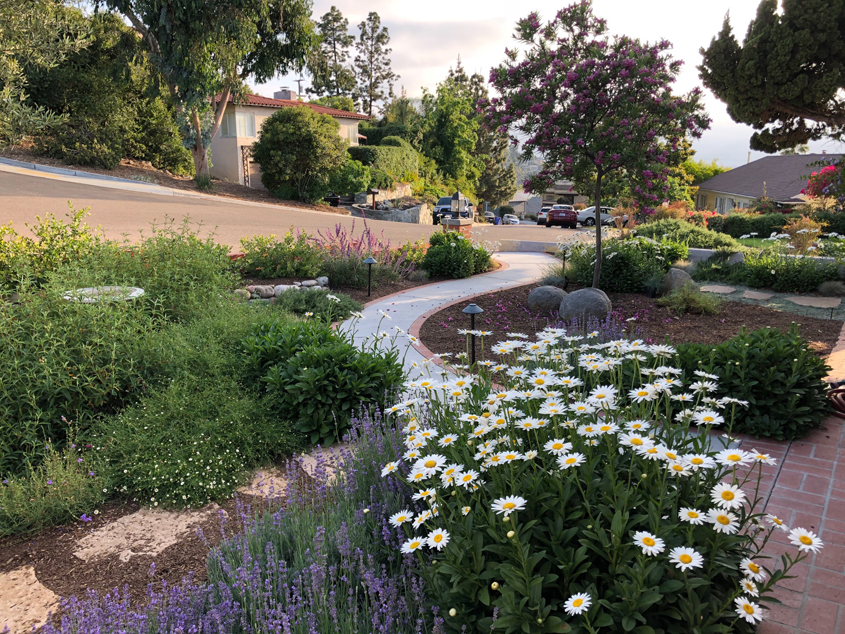
The new landscape design offers more privacy from surrounding streets. Photo: Helix Water District
The year-old landscape boasts a filled-in appearance and a wide variety of vibrant and colorful plants.
To offer privacy, create shade, and height, the landscape has a fruitless olive tree and a bright desert willow. Low water use daisies add lushness to the landscape. Shrubs and groundcover provide contrast with the home’s red brick front, including soft blue-greens from lavender, Mexican bush sage, and fescue grasses; emerald-colored rosemary; yellow-green rockrose; and splashes of purple, yellow, white, reds and pinks among the landscape’s many flowers.
Efficient new irrigation completes the transformation
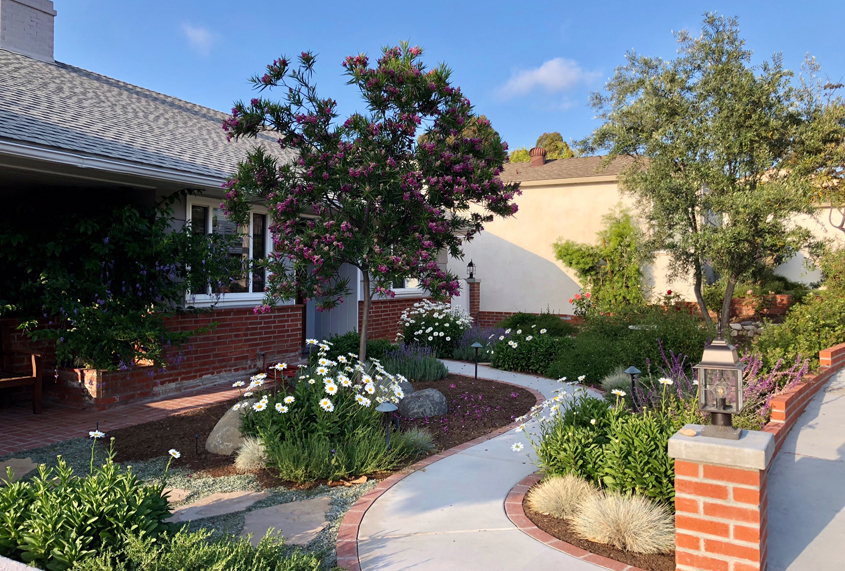
The new landscaping is more welcoming both to people and pollinators. Photo: Helix Water District
The efficient irrigation system includes micro sprays, drip irrigation, and a smart, weather-based irrigation controller. The landscape diverts and captures rainwater from the front roof and diverts the water to the back yard through a series of French drains. The new rainwater diversion prevents moisture from forming in the home’s basement and also provides additional water for the plants in the home’s backyard.
The new landscape is now more welcoming both to people and pollinators, birds, lizards, and other wildlife now calling the landscape home.
“We couldn’t have asked for a better landscape,” said Brianna Montgomery. “Our landscape fits the energy of our home and ourselves, and we loved being a part of the transformation every step of the way.”
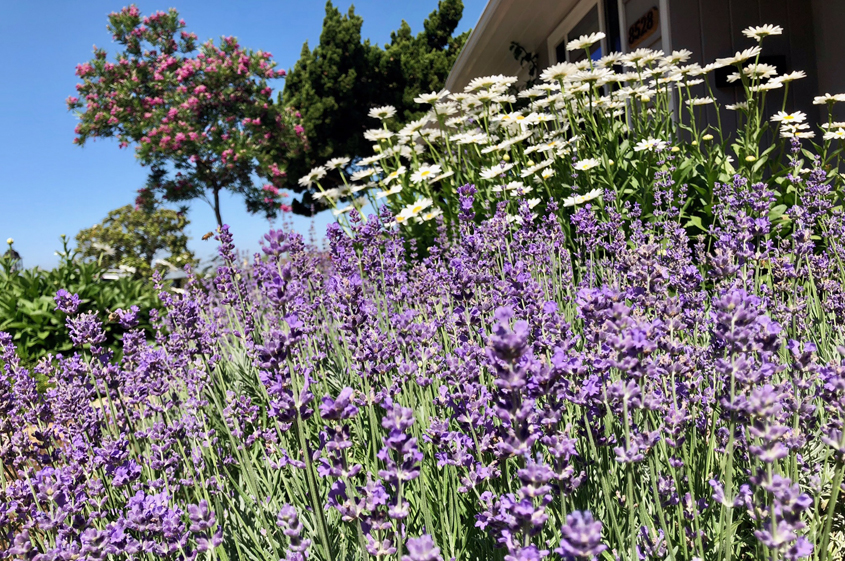
Lavender and daisies brighten the winning landscape design. Photo: Helix Water District
Brianna and Tim Montgomery were recognized at the June 17 Helix Water District virtual board meeting. They received a $250 gift card, an award certificate, and a WaterSmart contest winner sign to display in the yard.
Photos of the winning landscape project will appear in the winner’s section at landscapecontest.com, along with Helix’s past winners and those of other participating local water agencies, and on the district’s website.
Read more


